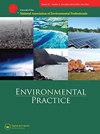Anthropological approaches for cultural resource conservation design and planning
Q3 Social Sciences
引用次数: 3
Abstract
ABSTRACT How natural and cultural resources are defined and valued has implications for their conservation and assessment. Although legal regulations for cultural resources such as the National Historic Preservation Act or the Native American Graves Protection and Repatriation Act offer clear guidelines for evaluating entities that fall under their jurisdiction, cultural resources cover far more than these official definitions encompass. Cultural models of cultural resources may vary across individuals from different management agencies, geographic regions, or cultural backgrounds. This in turn affects how they value and perceive cultural resources, both in their work and daily life. Anthropological methods including ethnography, cultural domain analysis, participatory action research, and crowdsourcing can offer critical insights into how different stakeholders or actors classify and perceive cultural resources. By recognizing the variability and dynamism in cultural resource definitions and values, it is possible to develop more holistic and inclusive assessment criteria for management and conservation. Developing emic understandings of cultural resources is particularly important in contexts with diverse populations, nested management institutions, and competing land-use priorities. This paper highlights methodologies for incorporating anthropological methods into integrated landscape conservation design and offers recommendations for how these methods can be applied.文化资源保护设计与规划的人类学方法
如何定义和评价自然和文化资源对其保护和评估具有重要意义。尽管《国家历史保护法案》或《美洲原住民坟墓保护与归还法案》等有关文化资源的法律规定为评估属于其管辖范围的实体提供了明确的指导方针,但文化资源所涵盖的范围远远超过这些官方定义所涵盖的范围。文化资源的文化模式可能因来自不同管理机构、地理区域或文化背景的个体而异。这反过来又影响了他们在工作和日常生活中如何重视和看待文化资源。人类学方法,包括民族志、文化领域分析、参与性行动研究和众包,可以为不同的利益相关者或行动者如何分类和感知文化资源提供重要的见解。认识到文化资源定义和价值的可变性和动态性,就有可能为管理和保护制定更全面和包容的评估标准。在人口多样化、管理机构嵌套、土地使用优先顺序相互竞争的背景下,发展对文化资源的普遍理解尤为重要。本文重点介绍了将人类学方法纳入综合景观保护设计的方法,并就如何应用这些方法提出了建议。
本文章由计算机程序翻译,如有差异,请以英文原文为准。
求助全文
约1分钟内获得全文
求助全文
来源期刊

Environmental Practice
ENVIRONMENTAL SCIENCES-
CiteScore
0.90
自引率
0.00%
发文量
0
期刊介绍:
Environmental Practice provides a multidisciplinary forum for authoritative discussion and analysis of issues of wide interest to the international community of environmental professionals, with the intent of developing innovative solutions to environmental problems for public policy implementation, professional practice, or both. Peer-reviewed original research papers, environmental reviews, and commentaries, along with news articles, book reviews, and points of view, link findings in science and technology with issues of public policy, health, environmental quality, law, political economy, management, and the appropriate standards for expertise. Published for the National Association of Environmental Professionals
 求助内容:
求助内容: 应助结果提醒方式:
应助结果提醒方式:


